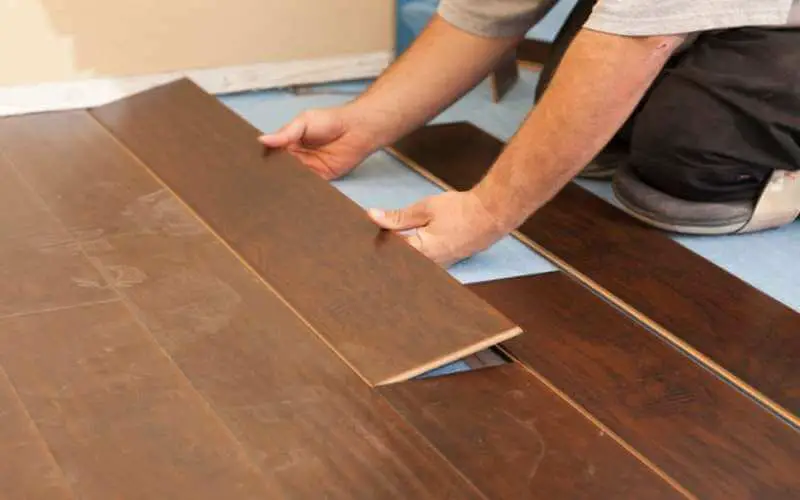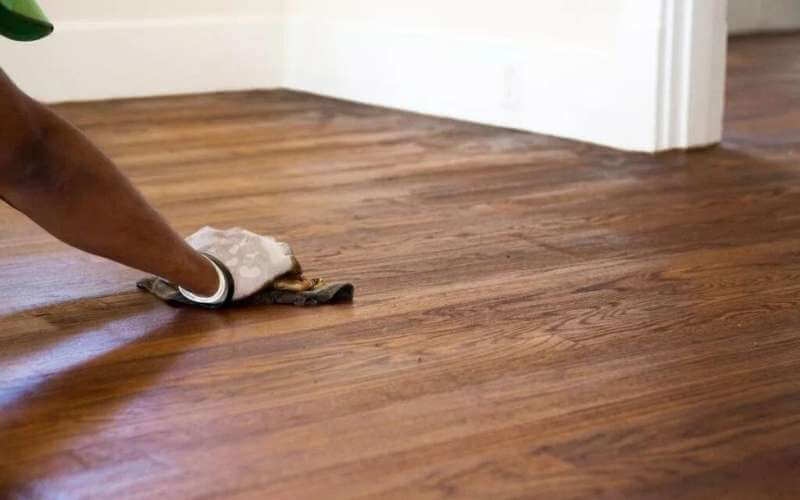Many homeowners are opting for floating floors nowadays, especially among DIYers. Floating floor is a very affordable flooring installation method, and you can save a few bucks than using the traditional floor wood installation method and are also easy to install.
If you have a few tools at home and some knee strength, you can install the flooring yourself and not have to pay for labor.
However, like any other flooring installation method, floating floors are not rid of cons. Knowing floating engineered wood flooring problems would give you the needed head sight of what to expect during the installation and how to avoid such problems.
Here are some typical floating engineered wood flooring problems to look out for.
Related: How to Fix Vinyl Plank Flooring Separating
Floating Engineered Wood Flooring Problems
Table of Contents
1. Peaking
One floating engineered wood flooring problem you may encounter is known as “peaking,” this is the expansion of the floorboards when they push against each other, resulting in high points at the joints. Peaking is caused by a whole of different reasons but can be easily fixed.
One of the most common culprits of peaking in floating engineered wood flooring is the moldings around the perimeter of the room being permanently fixed or nailed to the floor; this prevents the expansion of the floor.
Floating flooring cannot be nailed or glued into the subfloor or moldings; this is due to their flexibility and ability to expand and contract based on the room’s weather and humidity.
When the floorboards expand by themselves due to high room temperature, the planks develop high points in some areas of the boards.
To fix peaking in your flooring, you would need to determine the obstruction and eliminate it to even out the floor and return it back to its original look.
2. Buckling & Warping
If your subfloor is prone to excess moisture, it can cause your floating flooring to buckle and warp. This issue can also be caused by high air humidity.
To prevent your flooring from warping or buckling, it is important to avoid wet mopping the wood floor and avoid exposing it to too much moisture.
Preventing the problem from occurring is a better way to keep your wood flooring in its best shape, but if you notice any buckled area on the floor, you can place a heavy object on the spot.
Fixing a buckled floating engineered wood flooring is quite challenging, and the most effective option is to completely replace the buckled planks with new ones.
3. Mold & Mildew
Exposing your floating wood floor to excessive moisture causes mold, fungal spores, bacteria, which discolors and ruins the wooden floors. These can degrade the appearance of your flooring and cause it to look and smell pretty terrible.
Replacing affected floorboards is the best remedy for this problem, and you must first identify and eliminate the cause of the mold infestation before reinstalling new planks. This is to avoid the reoccurrence of the mold and mildew you are trying to get rid of, which is expensively counterproductive.
4. Chipping
Another common floating engineered wood flooring problem is chipping, and this is caused by poor installation.
Floating wood floors are prone to cracking, especially when a tapping block and mallet are used; this is due to the thin materials floating floors are usually made from.
You can chip the corners of wood flooring if you use improper cleaning methods such as vacuuming with a beater bar vacuum attachment.
When this occurs, the chipped area can act as an entrance for moisture that breeds mold and mildew, and other common problems listed above.
Preventing accidental damage is the best fix for this problem, but if you happen to chip your floor, it can easily be fixed.
Depending on the size of the chipped area and other floating flooring problems you may be experiencing, calling a professional might be the best route as they are more equipped and skilled to handle complicated floating engineered wood flooring problems.
Read: How to fix chipped wood floor
Conclusion
There are a number of floating engineered wood flooring problems you may encounter with this flooring installation type, one of which is peaking. Many homeowners opt for floating wood flooring installation method because it is a very easy process, but you would need to follow the right procedure.
Nailing or gluing the floorboards down to the subfloor would prevent them from expanding, which leads to peaking; you also need to ensure that your subfloor is moisture-free to prevent mold and mildew growth.
Keeping an eye out for these tips and some others discussed in this article will keep your floating engineered wood flooring problems down to the barest minimum.

